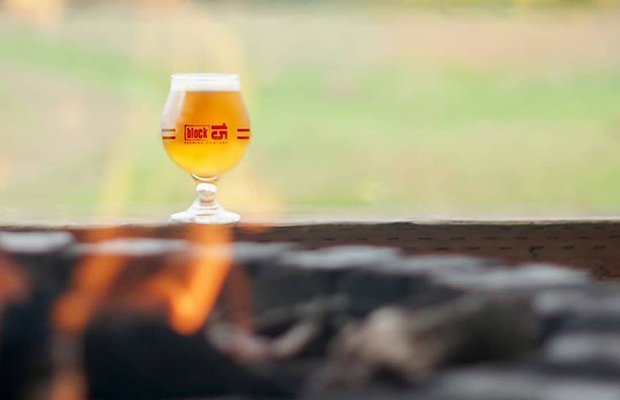
When the COVID-19 pandemic was in full swing in June 2020, the Brewers Association surveyed its trade group members — craft breweries across the United States — to learn how the crisis was impacting the industry, which had been surging over the past few decades.
One of the most frightening findings from this survey was that a majority of breweries did not think their business could last three more months given current conditions, suggesting thousands of closings.
An industry that had been growing at quite a clip — from 537 craft breweries in 1994 to 8,391 in 2019 — was facing an apocalypse. As places where people come to enjoy an imperial IPA, Scotch ale, or a cherry stout, it seemed as if COVID-19 would be the death-knell for these Millennial gathering spots.
Yet, fast forward to the spring of 2021 and American Craft Beer Week, the picture does not seem quite as bad. According to the Brewers Association’s annual craft brewing industry production report released in April, only 346 craft breweries closed for business permanently during 2020.
But not only did fewer breweries than expected close, the industry’s footprint actually grew last year. In 2020, 716 new craft breweries opened for business, leaving us with 370 more craft breweries in 2020 than we had had in 2019.
Of all the craft breweries that were open at the start of 2020, only 4.1% permanently closed during the subsequent 12 months. This is a closure rate that was on par with previous non-pandemic years. Between 2012 and 2018, the closure rate of craft breweries hovered between from 2.45% and 3.6%, while in 2019 it was 4.3%.
The tsunami of closures that many had feared back in June of 2020 never, it seems, materialized. So, what happened? Why did so few breweries close during the most challenging year imaginable?
Undoubtedly, government programs, such as the Paycheck Protection Program (PPP), helped some breweries.
With approximately 85% of craft breweries applying for PPP support, it played an important part in their survival, with Sean Casey, founder of Church Brew Works in Pittsburgh, referring to PPP monies as a “godsend.”
Many state and local governments also came to the help of craft breweries by introducing measures that made it easier for breweries to get their product into the hands of their customers. State laws surrounding alcohol sales are a patchwork of allowable practices and restrictions, but some fairly minor regulatory changes went a long way in helping craft brewers.
For example, Maryland suspended craft alcohol carryout purchase quotas that had limited customers to a single case of beer to-go, while New York enacted temporary legislation that made it possible for craft breweries to sell packaged beer in a sealed container for curbside pickup and home delivery.
While government intervention certainly helped, the real heroes of COVID-19 survival are the brewery owners and staff. It was their creativity, nimbleness, and sheer hard work that saw them through the challenges of COVID-19. Indeed, some industry insiders such as Kris Analclecto, president of the San Diego Brewers Guild, suggests that the creativity for which the industry is renowned served them well during the pandemic, with the result that the industry was able to pivot faster and more effectively than many other members of the leisure and hospitality sector.
The major pivot that craft breweries had to make was shifting from on-site to canned sales. Most craft breweries in the U.S. are small and depend upon taproom customers for most of their beer sales. Most of the beer that they sell is not packaged in cans or bottles. But COVID-19 meant that their beer now had to be put in cans (the packaging of choice for an increasing number of craft beer drinkers).
This increased demand for cans put unprecedented strains on the supply chain — both for the cans themselves and the mobile canning machines that do the canning, as most craft breweries do not own a canning machine.
The mismatch between supply and demand meant that the U.S. market was, according to one estimate, short 10 billion cans in 2020.
In addition to canning beer, craft breweries experimented with a variety of initiatives to get their product into the hands of customers — some were successful, others less so.
Federation Brewing in San Francisco started a SIP (shelter-in-place) subscription club that provided beer drinkers with four four-packs every two weeks, while in Cincinnati, MadTree Brewing sent “adult ice cream trucks” into city neighborhoods. Instead of ice cream, however the trucks were selling Mad Tree beer and Catch-a-Fire pizza. After a couple days, however, MadTree suspended this initiative — the trucks attracted crowds that were “uncomfortably big.” In Holland, Ohio, Black Frog Brewery offered its customers a free roll of toilet paper with every growler refill.
Despite the challenges of COVID-19, most breweries have survived. It should be noted that survival is not the same as prospering. While many breweries survived COVID-19, very few prospered. Nationwide, the volume of craft beer sold was down 9.3%, compared with 2019. But survival today is a prerequisite for prosperity tomorrow. Mary McDonald, executive director of the Ohio Craft Brewers Association, describes craft brewers as a “tough and scrappy bunch.”
COVID-19 certainly demonstrated the truth of that statement.
Dr. Neil Reid is a professor of geography and planning at The University of Toledo. Photo courtesy Block 15 Brewing.






Be the first to comment